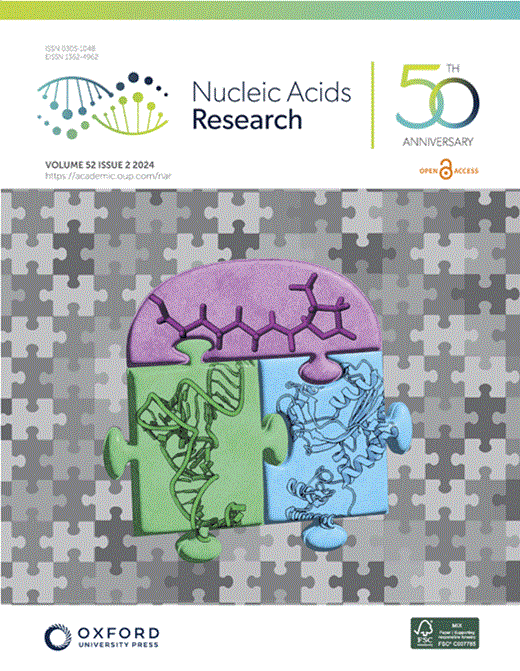CRISPR RNA binding drives structural ordering that primes Cas7-11 for target cleavage
IF 16.6
2区 生物学
Q1 BIOCHEMISTRY & MOLECULAR BIOLOGY
引用次数: 0
Abstract
Type III-E CRISPR–Cas effectors, referred to as Cas7-11 or giant Repeat-Associated Mysterious Protein, are single proteins that cleave target RNAs (tgRNAs) without nonspecific collateral cleavage, opening new possibilities for RNA editing. Here, biochemical assays combined with amide hydrogen–deuterium exchange mass spectrometry (HDX–MS) experiments reveal the dynamics of apo Cas7-11. The HDX–MS results suggest a mechanism by which CRISPR RNA (crRNA) stabilizes the folded state of the protein and subsequent tgRNA binding remodels it to the active form. HDX–MS shows that the four Cas7 RNA recognition motif (RRM) folds are well-folded, but insertion sequences, including disordered catalytic loops and β-hairpins of the Cas7.2/Cas7.3 active sites, fold upon binding crRNA leading to stronger interactions at domain–domain interfaces, and folding of the Cas7.1 processing site. TgRNA binding causes conformational changes around the catalytic loops of Cas7.2 and Cas7.3. We show that Cas7-11 cannot independently process the CRISPR array and that binding of partially processed crRNA induces multiple states in Cas7-11 and reduces tgRNA cleavage. The insertion domain interacts most stably with mature crRNA. Finally, we show a crRNA-induced conformational change in one of the tetratricopeptide repeat fused with Cas/HEF1-associated signal transducer (TPR-CHAT) binding sites providing an explanation for why crRNA binding facilitates TPR-CHAT binding.求助全文
约1分钟内获得全文
求助全文
来源期刊

Nucleic Acids Research
生物-生化与分子生物学
CiteScore
27.10
自引率
4.70%
发文量
1057
审稿时长
2 months
期刊介绍:
Nucleic Acids Research (NAR) is a scientific journal that publishes research on various aspects of nucleic acids and proteins involved in nucleic acid metabolism and interactions. It covers areas such as chemistry and synthetic biology, computational biology, gene regulation, chromatin and epigenetics, genome integrity, repair and replication, genomics, molecular biology, nucleic acid enzymes, RNA, and structural biology. The journal also includes a Survey and Summary section for brief reviews. Additionally, each year, the first issue is dedicated to biological databases, and an issue in July focuses on web-based software resources for the biological community. Nucleic Acids Research is indexed by several services including Abstracts on Hygiene and Communicable Diseases, Animal Breeding Abstracts, Agricultural Engineering Abstracts, Agbiotech News and Information, BIOSIS Previews, CAB Abstracts, and EMBASE.
 求助内容:
求助内容: 应助结果提醒方式:
应助结果提醒方式:


